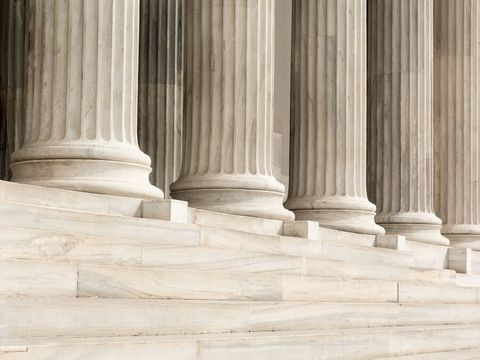Trump v. Casa: Nationwide Injunctions And The Class Action Loophole
Client Alert | 1 min read | 07.14.25
On June 27, in Trump v. Casa, the Supreme Court held that federal courts lack equitable authority to issue “nationwide”—or, using the Court’s preferred parlance, “universal”—injunctions. Writing for the 6-3 majority, Justice Barrett explained that whether Congress vested the judiciary with such power depends on the existence of a founding-era antecedent to the practice of universal injunctions. Finding none, the Court held that universal injunctions fall outside a federal court’s equitable authority.
But what about injunctive relief for a nationwide class? The majority did not take this issue up. In a concurring opinion joined by Justice Thomas, Justice Alito spotlighted the omission as a “potentially significant loophole.” Observing that the Court’s “decision will have very little value” if plaintiffs can secure the same purportedly foreclosed outcome by getting a nationwide class certified, Justice Alito admonished: “district courts should not view today’s decision as an invitation to certify nationwide classes without scrupulous adherence to the rigors of Rule 23. Otherwise, the universal injunction will return from the grave.”
And return it may. Within hours of the Court’s decision, attorneys for CASA moved for a preliminary injunction over birthright citizenship on behalf of a nationwide class, and, on July 10, the Maryland federal court certified the proposed class.
This is surely not the last word on point. How courts tackle the lingering class-action question will have ripple effects for industry and beyond nationwide.
Crowell will continue to monitor developments as litigants and courts test the boundaries of Trump v. Casa.
Contacts
Insights
Client Alert | 5 min read | 12.12.25
Eleventh Circuit Hears Argument on False Claims Act Qui Tam Constitutionality
On the morning of December 12, 2025, the Eleventh Circuit heard argument in United States ex rel. Zafirov v. Florida Medical Associates, LLC, et al., No. 24-13581 (11th Cir. 2025). This case concerns the constitutionality of the False Claims Act (FCA) qui tam provisions and a groundbreaking September 2024 opinion in which the United States District Court for the Middle District of Florida held that the FCA’s qui tam provisions were unconstitutional under Article II. See United States ex rel. Zafirov v. Fla. Med. Assocs., LLC, 751 F. Supp. 3d 1293 (M.D. Fla. 2024). That decision, penned by District Judge Kathryn Kimball Mizelle, was the first success story for a legal theory that has been gaining steam ever since Justices Thomas, Barrett, and Kavanaugh indicated they would be willing to consider arguments about the constitutionality of the qui tam provisions in U.S. ex rel. Polansky v. Exec. Health Res., 599 U.S. 419 (2023). In her opinion, Judge Mizelle held (1) qui tam relators are officers of the U.S. who must be appointed under the Appointments Clause; and (2) historical practice treating qui tam and similar relators as less than “officers” for constitutional purposes was not enough to save the qui tam provisions from the fundamental Article II infirmity the court identified. That ruling was appealed and, after full briefing, including by the government and a bevy of amici, the litigants stepped up to the plate this morning for oral argument.
Client Alert | 8 min read | 12.11.25
Director Squires Revamps the Workings of the U.S. Patent Office
Client Alert | 8 min read | 12.10.25
Creativity You Can Use: CJEU Clarifies Copyright for Applied Art
Client Alert | 4 min read | 12.10.25
Federal Court Strikes Down Interior Order Suspending Wind Energy Development





